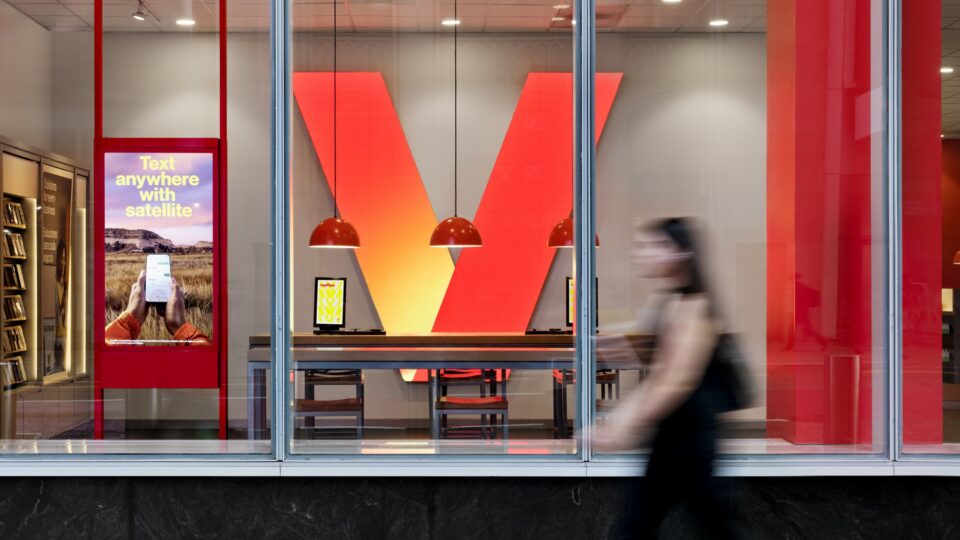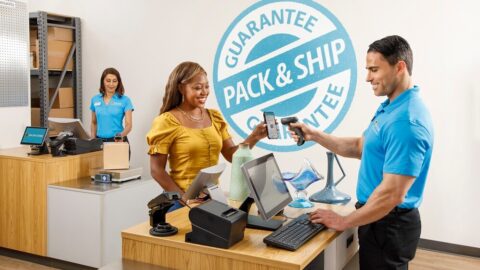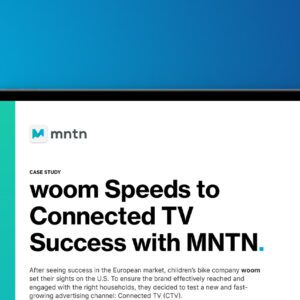Given its primary role as a telecommunications provider, it can be easy to overlook the fact that Verizon also is one of the most ubiquitous retailers in the U.S. With more than 8,000 stores, Verizon ranks among the top six largest retailers in the country by store count, outpacing even Walmart. And that number continues to grow — last year, Verizon added 1,000 stores, and 1,000 more are on the way this year at a pace of two to three openings per day.
This kind of rapid growth is a sign of the brand’s strength, but not too long ago, Verizon’s consumer business was struggling. “We had a very rough ’21 and ’22 at Verizon Consumer, very rough. We missed guidance twice in a year. We had lost our mojo,” said Sowmyanarayan Sampath, CEO of Verizon Consumer, who took over the division in March 2023.
‘The Turnaround Guy’

While it’s not his official title, Sampath refers to himself the “turnaround guy,” and it’s a perfect description of the role he’s played at Verizon over the last decade. During that time he’s held eight different roles, giving him, as he said, “a half-life of 18 months. I tend to get involved in big turnaround situations and then move into the next thing.” He has worked his magic once again in the consumer division, which has now reported eight consecutive quarters of growth.
By almost any metric, Verizon’s consumer division is its most important. It accounts for approximately 80% of the Verizon business: 2024 revenues for the consumer business were $102.9 billion out of $134.8 billion in total revenue for the company. The division encompasses “everything that is needed to sell and take care of customers in our consumer business,” said Sampath, from cell phones and tablets to the FiOS fiber business. It also has, according to Sampath, one of the largest marketing budgets in the world.
Not to mention those 8,000 stores (and counting). And in fact, the stores and the employees that staff them have been the key to Sampath’s turnaround of the business. Sampath shared with Retail TouchPoints how employee compensation was the unlock that returned the business to growth, and why he doesn’t believe in pursuing omnichannel perfection.
The Problem: Lagging Sales
At its core, the problem with Verizon’s consumer business was a simple matter of not selling enough. The first thing Sampath did to correct this was fix the company’s “price problem.”
“Our price premium was too high — when I joined it was almost 50% over the market,” he said. “Despite how good we are, selling at a 50% price premium is tough to get through the system. So the first thing we did was reduce our price premium to 20%, and what was interesting is that even though we reduced our price premium our incoming revenue from customers actually went up, because people started buying more.”
But that was just the first step. The other changes Sampath has made are a study in the interconnected nature of employees, stores and communities. They include:
- Shifting from a group compensation structure to individual compensation for sales reps;
- Decentralizing store operations and encouraging localization in everything from design to staffing to merchandising;
- Prioritizing superb digital and store experiences rather than pushing omnichannel perfection; and
- Lightening employees’ cognitive overload with new AI tools.
Shifting the Mindset from ‘Jobs’ to ‘Careers’
Once the issues on the product side of the business were resolved (that is, the implementation of more competitive prices), Sampath turned his attention to service. More so than other retailers, Verizon’s stores are critical education, support and selling points for a company that trades in a vast array of complex products and services. But the sales teams’ performance simply wasn’t up to par, and while one might think the solution would be training or incentives, Sampath focused on a much more foundational element — pay.

“Verizon is one of the few jobs left in America where you can come in with an associate degree and [end up running] some of the largest groups in America; almost every one of our sales leadership team started on the floor,” said Sampath. “But when you move to group compensation, you don’t create careers anymore, you create a job. It became a self-fulfilling cycle where people were on group comp, they didn’t think that careers could be built, so they weren’t performing well and so the stores weren’t doing well. [As a result corporate decides not] to double down on stores and instead focus on digital.
“We went back to individual compensation and it started the whole Renaissance [in the consumer business],” he added. “By saying, ‘You can build long-term careers in stores,’ the stores started doing really well. [Suddenly then the attitude was] we need more stores.”
Most of the new stores slated to open this year will be under the Total by Verizon banner, which Sampath refers to as Verizon’s “diffusion” brand. Total by Verizon stores are focused on a lower price point offering, in particular prepaid mobile, to compete with brands like Cricket and T-Mobile‘s Metro PCS. Introduced in 2022, Total by Verizon stores now number close to 1,300 and that will nearly double this year, said Sampath. The company also has embarked on a new shop-in-shop trial with Office Depot that is staffed by Verizon employees.
Across the chain, the result of the compensation shift was not only improved employee satisfaction, but also a productivity bump of 20%. Sampath’s approach to the issue of underperformance reflects a broader, pervasive mindset at Verizon that has come through in conversations with other company executives as well.
“Retail can still create careers,” Sampath said. “There’s a notion in America that retail is a fleeting job, a job between other jobs. It’s not. At Verizon, one of the things I want to do is create careers for people, long-term, sustainable careers where they can put their kids through school and live a happy, retired life.”
Making Stores Part of the Community

Another important shift was giving employees and their superiors more control over the experience they offered in their stores. When Sampath took over, the retail operation was run out of Verizon’s Basking Ridge, N.J. headquarters. Sampath broke that up into 55 local territories organized under six regional umbrellas that are each run by their own territory and regional heads.
The intent was to create tangible localization of Verizon stores across the country. “We decided that we want to be a local community brand that aggregates to a national brand, as opposed to the other way around,” said Sampath. “If you close your eyes and someone drops you in most of the national big-box retailers, you would have no idea where in the country you are. Why would I come to a store like that? Unless there’s something personal in the store, either the service or a localized product or a community feel, you can just do it online. If you want people to come to your store, you’re going to have to give them a reason — great inventory, personalized service, a referral, a sense of community.”
These localization efforts take many forms, including:
- Store managers and reps who know the local residents and get involved in community events;
- Localized interior design, which can include things like murals from local artists, as in several Miami locations. These localized aesthetics run in tandem with a broader brand refresh rolled out last June;
- Store managers can select their own music playlists for their stores;
- Customization of certain store areas, merchandise mix and local offers; and
- Localized staffing, for example, more Spanish-speaking staff in areas with a large Latin community.

Verizon also is getting more involved in community events across the country. In February the company hosted “FanFests” at 30 NFL stadiums for fans who weren’t able to attend the Super Bowl live (that is, most of us). There was food, drinks, NFL player meet-and-greets, entertainment from local performers and interactive activities like stadium tours.
And now Verizon is getting in on the year’s hottest collab — the third season of HBO Max’s White Lotus — with themed installations at 300 stores from March 1 through April 4 that feature an immersive AR experience inspired by the show, plus the chance for customers discover their aura colors through a personality quiz.
Prioritizing Personalization over Omnichannel
Counter to many of his retail peers, one thing Sampath isn’t focused on is omnichannel. “I don’t love the word omnichannel, because it feels like a cute way of saying I’m going to sub-optimize both the digital and physical experience,” he explained. “I want the world’s best digital and the world’s best physical experience. If there are two or three points of connection, I will do it, but I’m not going to optimize for it, and that’s what most companies do. There are so many demands on the systems to get to a phenomenal omnichannel experience and [the result is] both experiences get dumbed down. I would rather make some sacrifices in omni to offer the best digital and the best in-store experience.”

Instead, Sampath believes the key is that both physical and digital experiences feel personalized to the customer. While Verizon may not try to deeply integrate its store services and digital offerings, it does do things like help customers set up the Verizon app in stores and facilitate offerings like buy online, pick up in-store.
Rather than omnichannel, Sampath said he thinks of it more as “blending the boundary” between stores and digital. “Stores need to be a personalized experience. When you walk into our store, if I know you’re a customer, I need to talk to you like I know everything about you. And even if you go and look at all the digital displays, that needs to be a logged-in, personalized experience. I also think there’s an opportunity for education at the store — how to do cyber better, how to use fintech better — stores are a great place for [those kinds of conversations].”
Leveraging AI to Lighten Employees’ Cognitive Load
Like just about every other company in the world these days, Verizon is looking at ways to take advantage of advances in AI. Currently, those efforts are focused more on employees than customers. “Our feeling is that if we get the employee experience right, they’ll take care of the customer, and we can deploy customer experience AI later,” said Sampath.
In that regard, the biggest use case Sampath sees for AI is reducing employees’ cognitive overload: “Our frontline teams have way too much shit to remember, and as a result they’re always thinking about the shit they have in their head, versus listening to customers and empathizing with customers,” he said. “The goal of AI for us has been reducing that cognitive load.”
This is being trialed through as many as eight different AI solution deployments, including:
- A personal shopper tool for store associates that streamlines information and potential offers based on the associate’s interactions with each customer;
- A personal research assistant (PRA) for call center staff that condenses the knowledge from more than 20,000 documents and guides support staff to the specific information they need to solve a customer’s issues; and
- Sentiment analysis on support calls that will identify when things are going south and proactively notify a manager to come help. At the end of calls, call center staff also can view a dashboard giving them performance feedback to help refine their skillset.
At the end of the day, all of these efforts furnish proof that Verizon is playing the long game: “We are the largest network by a country mile — more customers trust us, more governments trust us, more agencies trust us, more small businesses trust us, more large companies trust us, more schools trust us,” Sampath said. “A big part of my mandate is to take all that trust and build on it. We’ve invested $200 billion in America in the last six years. If there’s anyone who can say they’re America first, it’s Verizon.”















